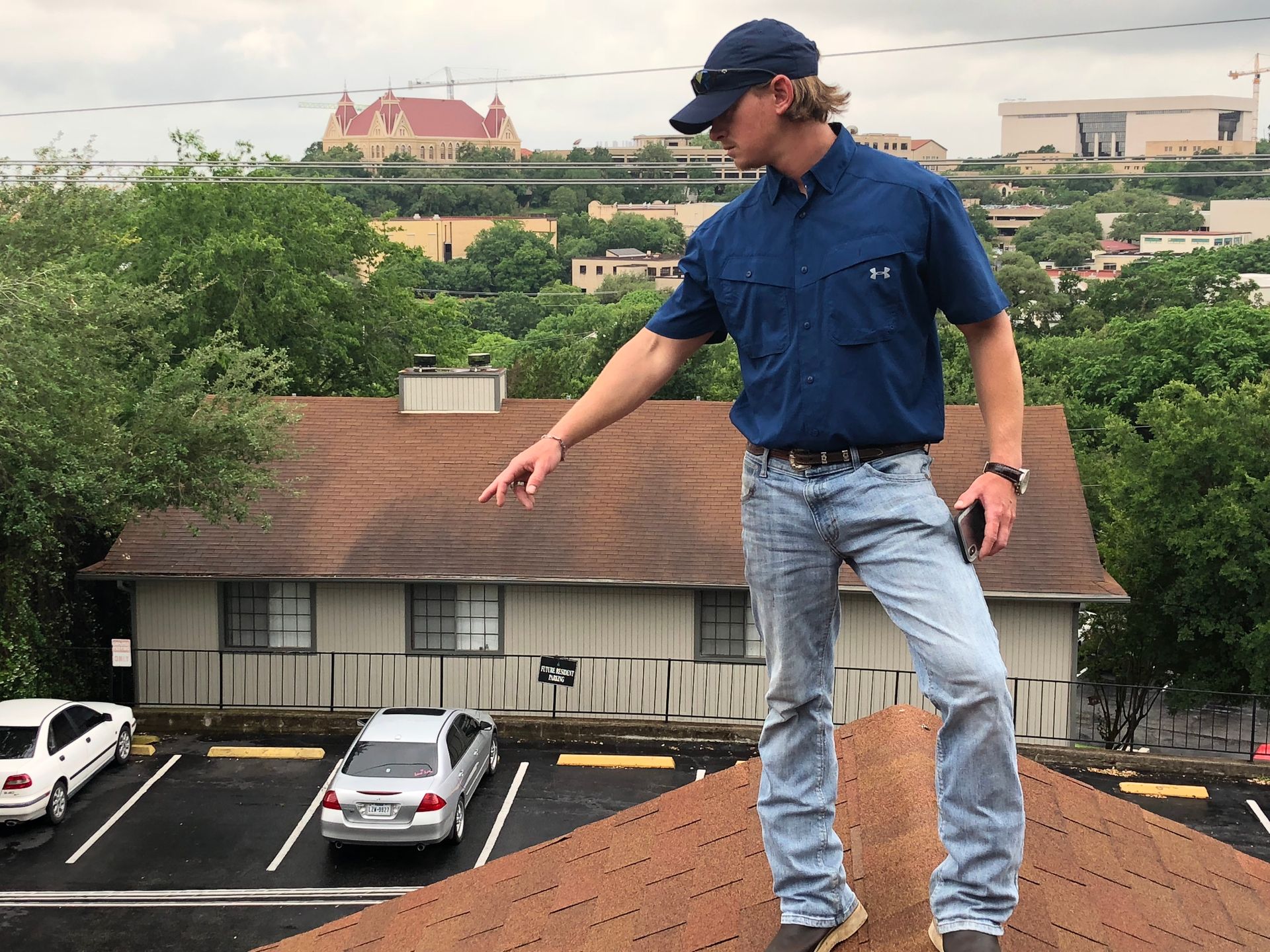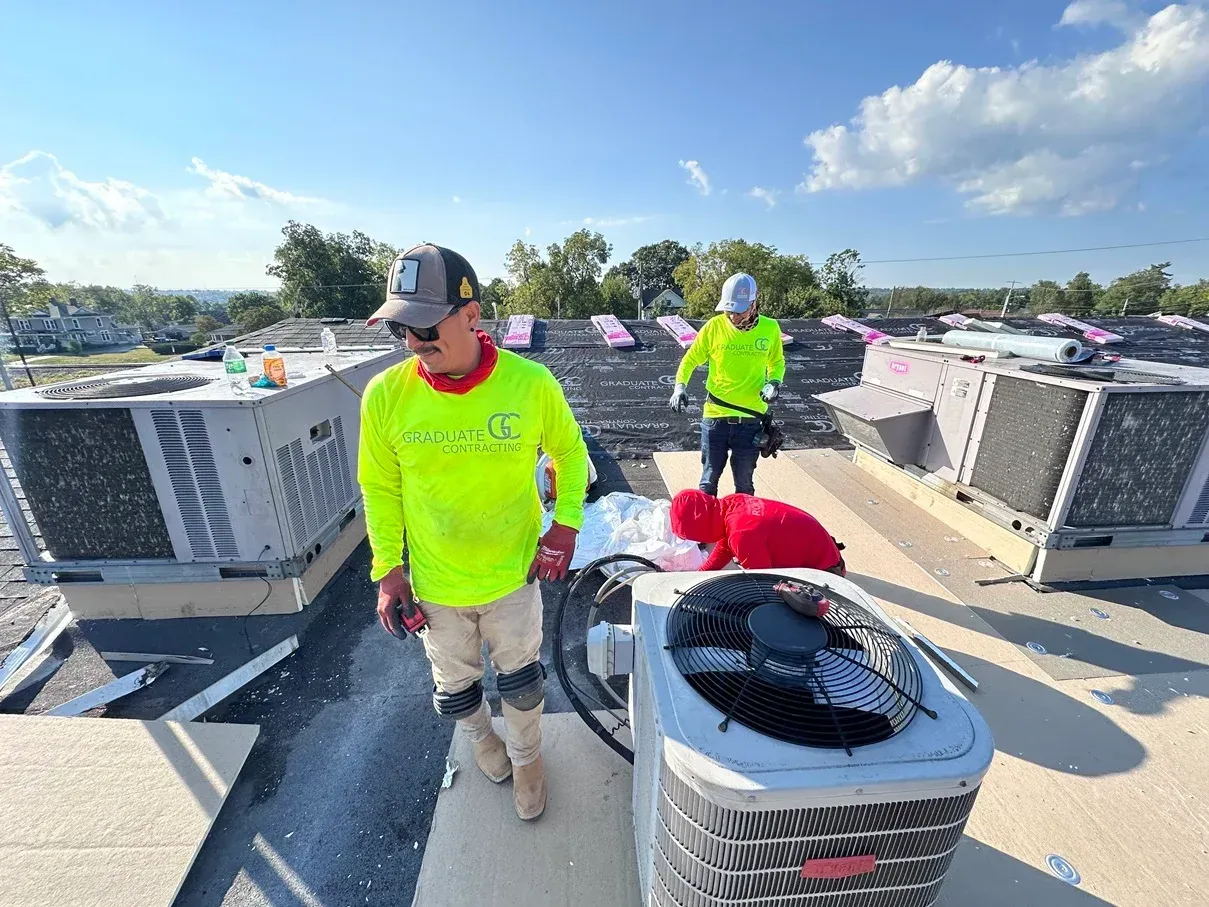Is the Texas Sun Baking Your Roof? A Guide to Heat Damage Prevention
Here in Central Texas, we know a thing or two about heat. We seek out shade, hydrate constantly, and plan our outdoor activities around the coolest parts of the day. But while we’re protecting ourselves from the scorching summer sun, our homes’ first line of defense (the roof) is taking a relentless, direct hit, day after day.
This constant barrage of intense heat and powerful UV radiation does more than just warm up your attic; it actively works to degrade your roofing materials, shorten their lifespan, and set the stage for costly failures. At Graduate Contracting, we believe that the best defense is a good offense. Understanding how heat damages your roof is the first step toward implementing smart, proactive solutions to prevent it.
How the Sun Attacks Your Roof
The Texas sun wages a two-front war on your roof: intense heat and damaging ultraviolet (UV) radiation.
- Thermal Shock and Cracking: This is one of the greatest threats to asphalt shingles. Your roof expands as it bakes in the afternoon sun and then contracts as it cools down overnight. This constant cycle of expansion and contraction, known as thermal shock, creates stress on the shingles. Over time, this stress leads to cracks, splits, and fissures, creating easy entry points for water.
- Granule Loss: The sandpaper-like granules on your asphalt shingles are their primary shield against UV rays. Intense heat accelerates the drying and hardening of the asphalt that holds these granules in place. As the asphalt weakens, the granules break loose and wash into your gutters, leaving the underlying shingle material exposed and vulnerable to rapid deterioration.
- Warping and Deformation: Materials like wood shakes can dry out, warp, and split under intense sun. Even the plywood decking beneath your shingles can suffer, becoming warped or delaminated if the heat in your attic becomes too extreme.
- Sealant Degradation: The flexible sealant used to waterproof the flashing around chimneys, vents, and skylights is particularly vulnerable. UV radiation breaks down its chemical bonds, causing it to become hard, brittle, and cracked, compromising these critical, leak-prone areas.
Your Proactive Heat Defense System
Waiting for a leak to appear is a reactive, expensive strategy. A proactive approach focuses on mitigating heat before it can do its worst damage. Here are the most effective solutions for the Texas climate:
1. Master Your Attic Ventilation
This is, without a doubt, the most critical component of a heat-resilient roofing system. A properly ventilated attic allows hot, moist air to escape while drawing in cooler, drier air from outside. This constant airflow prevents your attic from becoming a super-heated oven.
- The Goal: To keep the attic temperature as close to the outside air temperature as possible.
- The Solution: A balanced system of intake vents (in the soffits or under the eaves) and exhaust vents (like ridge vents along the peak or solar-powered attic fans). This creates a continuous, passive flow of air that dramatically reduces the heat load on your roof deck and shingles.
2. Choose a "Cool" Roofing Material
Modern roofing technology offers materials specifically engineered to combat the sun. These are often referred to as "cool roofs."
- The Goal: To reflect more sunlight and absorb less heat than a standard roof.
- The Solution: Consider shingles or metal roofing in lighter colors. The Department of Energy has shown that cool roofs can be more than 50°F cooler than standard materials. Major manufacturers like GAF offer shingles with specially designed reflective granules (like their Timberline® CS shingles) that reflect solar energy, keeping your attic cooler and lowering your energy bills.
3. Invest in High-Quality, Resilient Materials
When it's time for a roof replacement, selecting a more durable material can make a significant difference in its ability to withstand heat.
- The Goal: To choose a material inherently built to resist the stresses of a hot climate.
- The Solution: Impact-resistant (IR) shingles, while known for their hail resistance, are often made with a more robust asphalt formula and a rubber-like polymer (SBS), which makes them more flexible and less prone to cracking under thermal shock. Similarly, a standing-seam metal roof is an excellent long-term option, renowned for its reflective properties and durability.
Partner with the Heat-Defense Experts
Protecting your roof from the Texas sun requires more than just standard materials; it requires a strategic system. At Graduate Contracting, we don't just install roofs, we design complete roofing systems tailored to the specific challenges of our climate.
Our team of experts can perform a thorough assessment to identify areas where your home is vulnerable to heat damage. We can analyze your attic ventilation, recommend the right materials with proven cool-roofing technology, and ensure your home is fortified against the summer heat for years to come.
Don't wait for the sun to win the war against your roof. Contact Graduate Contracting today for a free consultation and learn how you can build a powerful defense against heat damage.


